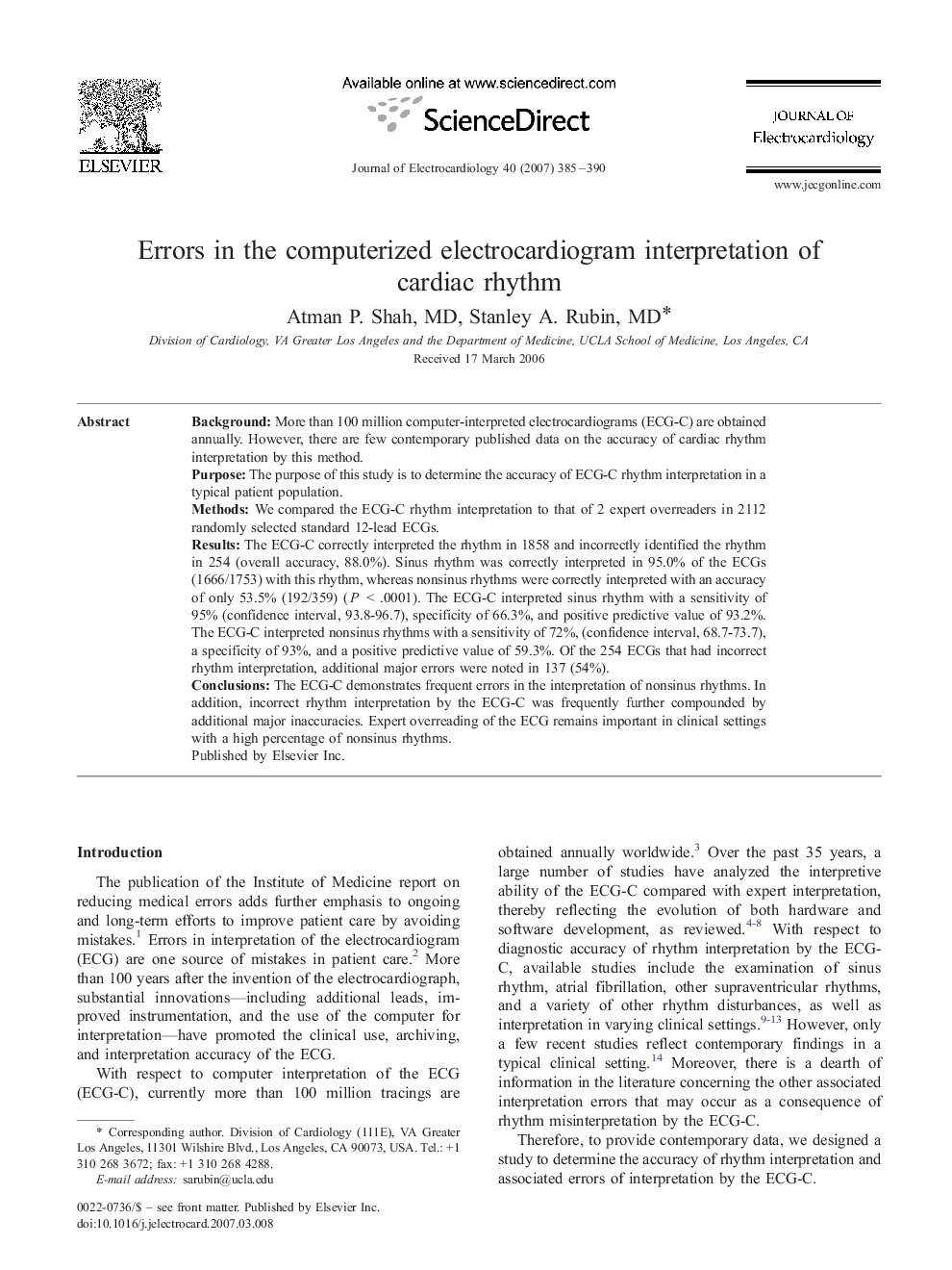| Article ID | Journal | Published Year | Pages | File Type |
|---|---|---|---|---|
| 2969122 | Journal of Electrocardiology | 2007 | 6 Pages |
BackgroundMore than 100 million computer-interpreted electrocardiograms (ECG-C) are obtained annually. However, there are few contemporary published data on the accuracy of cardiac rhythm interpretation by this method.PurposeThe purpose of this study is to determine the accuracy of ECG-C rhythm interpretation in a typical patient population.MethodsWe compared the ECG-C rhythm interpretation to that of 2 expert overreaders in 2112 randomly selected standard 12-lead ECGs.ResultsThe ECG-C correctly interpreted the rhythm in 1858 and incorrectly identified the rhythm in 254 (overall accuracy, 88.0%). Sinus rhythm was correctly interpreted in 95.0% of the ECGs (1666/1753) with this rhythm, whereas nonsinus rhythms were correctly interpreted with an accuracy of only 53.5% (192/359) (P < .0001). The ECG-C interpreted sinus rhythm with a sensitivity of 95% (confidence interval, 93.8-96.7), specificity of 66.3%, and positive predictive value of 93.2%. The ECG-C interpreted nonsinus rhythms with a sensitivity of 72%, (confidence interval, 68.7-73.7), a specificity of 93%, and a positive predictive value of 59.3%. Of the 254 ECGs that had incorrect rhythm interpretation, additional major errors were noted in 137 (54%).ConclusionsThe ECG-C demonstrates frequent errors in the interpretation of nonsinus rhythms. In addition, incorrect rhythm interpretation by the ECG-C was frequently further compounded by additional major inaccuracies. Expert overreading of the ECG remains important in clinical settings with a high percentage of nonsinus rhythms.
